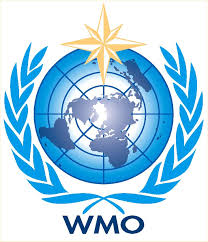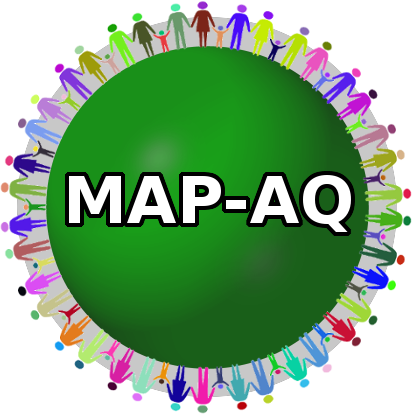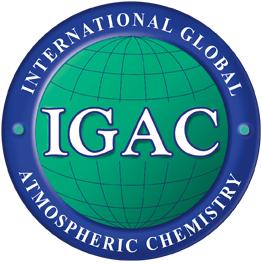Monitoring, Analysis, and Prediction of Air Quality (MAP-AQ)
Overarching Objective:
Develop and implement a global air pollution monitoring, analysis, and prediction system for air quality with downscaling capability in regions of the world affected by high levels of atmospheric pollutants, in particular in Asia, Latin America, and Africa.
Description:
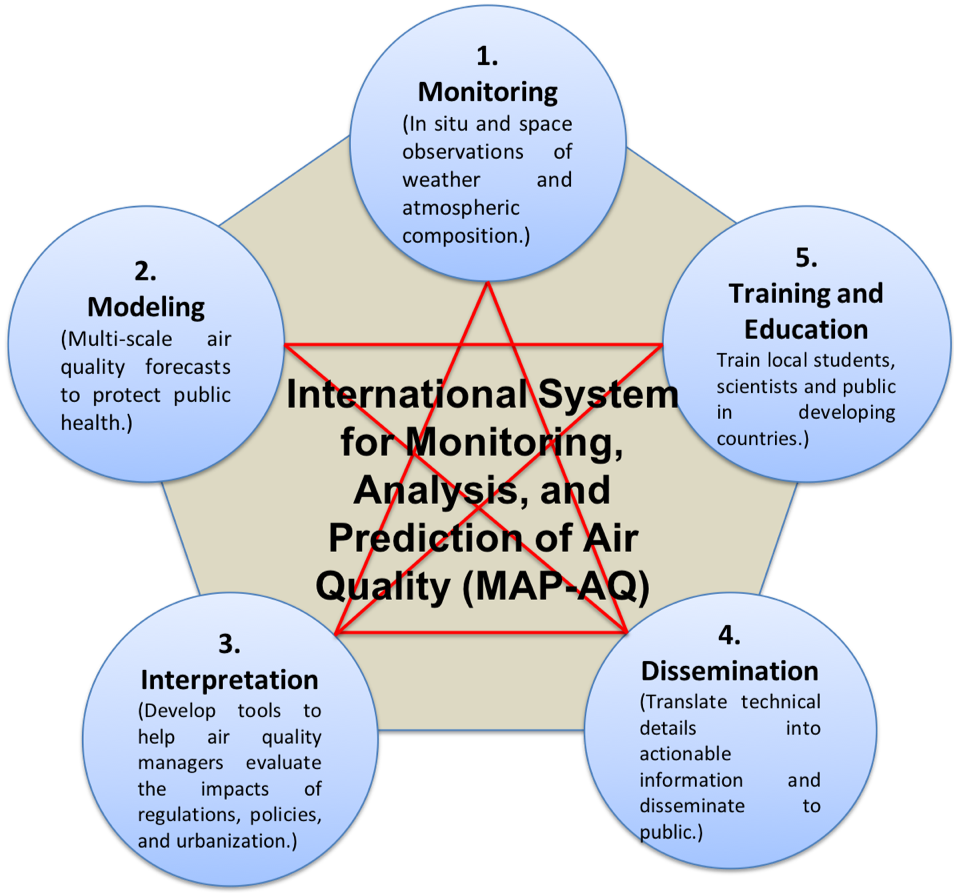
- To constitute and develop a consortium of expert groups to coordinate and enhance research and services that will help mitigate air pollution, specifically in regions of the world where high concentrations of pollutants are observed.
- To develop and implement a global air pollution monitoring, analysis, and prediction system with downscaling capability in regions of the world that are affected by high levels of atmospheric pollutants, particularly in the low and middle-income countries.
- To combine an ensemble of state-of-the-art multi-scale chemical transport models, high-resolution emission inventories, space observations, surface measurements and post-processing techniques to provide near-real-time forecasts and analyses of air pollution and its effect at the global to regional and local scales.
- To co-design and co-develop with users and other stakeholders relevant products and services, and transfer air quality related information to the public.
- To co-design and co-develop with policymakers emission control strategies to reduce air pollution in the long-term.
- To create collaborative efforts for the application of the system to urban planning.
- To develop educational activities in support of the capacity building.
MAP-AQ co-Chairs:
Guy P Brasseur (NCAR/Max Planck Institute for Meteorology) brasseur@ucar.edu
Rajesh Kumar (NCAR) rkumar@ucar.edu
MAP-AQ Steering committee:
Ravan Ahmadov (NOAA, USA) ravan.ahmadov@noaa.gov
Gabriele Pfister (NCAR, USA) pfister@ucar.edu
Nicolas Huneeus (University of Santiago, Chile), nhuneeus@dgf.uchile.cl
Rebecca Garland (Council for Scientific and Industrial Research, South Africa), RGarland@csir.co.za
Sachin Ghude (Indian Institute of Tropical Meteorology, Pune, India), sachinghude@tropmet.res.in
Aijun Ding (Nanjing University, China) dingaj@nju.edu.cn
Evelyne Toure (University "Félix Houphouët-Boigny", Abidjan, Africa) ndatchoheve@yahoo.fr
Orial Jorba (Barcelona Supercomputing Center, Spain) oriol.jorba@bsc.es
Pieternel Levelt (KNMI, Netherlands) pieternel.levelt@gmail.com
Ex-Officio:
IGAC representative: Louisa Emmons emmons@ucar.edu
WMO representative: Alexander Baklanov abaklanov@wmo.int
NASA representative: Richard Eckman richard.s.eckman@nasa.gov
ECMWF/CAMS representative: Vincent-Henri Peuch Vincent-Henri.Peuch@ecmwf.int
WHO representative: Natalie Roebbel roebbeln@who.int
AMIGO representative: Claire Granier Claire.Granier@noaa.gov
GAFIS representative: Johannes Flemming Johannes.Flemming@ecmwf.int
Past steering committee members:
Manish Naja (Aryabhatta Research Institute of Observational Sciences, India), manish@aries.res.in
Xuemei Wang (Jinan University, China), eciwxm@jnu.edu.cn
Yvonne Scorgie (Office of Environment and Heritage, Australia), Yvonne.Scorgie@environment.nsw.gov.au
Ashraf Zakey (The Egyptian Meteorological Authority, Egypt), ashzakey@gmail.com
MAP-AQ Asian office Shanghai
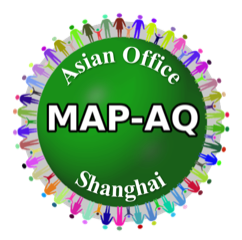
The first MAP-AQ office was set up on October 2019 in Fudan University, Shanghai, China.
Office Name: MAP-AQ Asian office Shanghai
Lead Scientist: Renhe Zhang (Fudan University)
Website: www.mapaq.fudan.edu.cn (under construction)
Contact email: mapaq@fudan.edu.cn
The main responsibilities of MAP-AQ Asian Office Shanghai include:
- To coordinate the work between research institutes and competent departments in Asia under the framework of MAP-AQ.
- To assist government agencies across Asia in formulating location-specific policies for emission reduction.
- To develop educational activities in support of capacity building in Asian countries.
Projects led by MAP-AQ members:
1. Partnership with China on Space Data (PANDA): This project has developed an operational multi-model air quality forecasting system based on nine different chemistry transport models and provides daily forecasts of ozone, nitrogen oxides, and fine particulate matter for the 37 largest urban areas of China. The forecasts are disseminated through a publicly accessible website: http://www.marcopolo-panda.eu, Funding Agency: EU, Principal Investigator: Guy P. Brasseur.
2. Prediction of Air Pollution in Latin America (PAPILA): This project is developing an operational multi-model air quality forecasting system for Latin America similar to the MarcoPolo-PANDA system developed for China., Funding Agency: EU, Principal Investigator: Guy P. Brasseur.
3. AirQuip Project (https://wiki.met.no/airquip/start): This project has developed a downscaling tool and is providing daily operational air quality forecasts for all Norwegian municipalities and the general public (https://luftkvalitet.miljostatus.no/). High-resolution air quality forecasts are generated using EMEP model runs which in turn use CAMS global boundary conditions, bridging all scales from global to 50 meters. Funding Agency: Research Council of Norway, Principal Investigator: Michael Gauss.
4. Air Quality Early Warning System (AQ-EWS) for New Delhi: The Indian Institute of Tropical Meteorology (IITM), Pune, India and the National Center for Atmospheric Research (NCAR), Boulder, USA have entered into an international partnership to develop an advanced air quality forecasting system for the urban area of Delhi and the surrounding regions. This new air quality forecasting system provides air quality forecasts 72 h in advance. Aerosol optical depth (AOD) retrievals from the Moderate Resolution Imaging Spectroradiometer (MODIS) are assimilated in near-real-time to improve chemical initialization of the air quality forecasts every day. Air quality forecasts along with their near-real-time hourly and daily verification are disseminated to the public and decision-makers through a newly developed website (https://ews.tropmet.res.in/). These forecasts have been found useful in the air quality decision-making activity especially in imposing and lifting the restriction of different emission sectors before and after predicted severe air pollution episodes. Funding Agency: Monsoon Mission, Indian Institute of Tropical Meteorology, India, Principal Investigators: Rajesh Kumar, Sachin Ghude, and Stefano Alessandrini.
5. Quasi-operational air quality forecasting system for the contiguous United States (CONUS): The National Center for Atmospheric Research (NCAR) is now generating high-resolution, experimental, 48-hour forecasts of air pollutants across the contiguous United States. The predictions, which are freely available online, can help decision makers anticipate episodes of unhealthy air as well as accelerate research into the factors that influence air quality. The system, which draws on observations of pollutants, weather forecasts, and advanced computer modeling, will complement existing operational air quality forecasts issued by the National Oceanic and Atmospheric Administration (NOAA). The NCAR forecasts are primarily for research purposes, but they are based on different techniques than those used by NOAA and can provide state and local officials who are trying to safeguard public health with a more complete picture of air quality. These forecasts can be publicly accessed on https://www.acom.ucar.edu/firex-aq/forecast.shtml. Funding Agencies: NASA and NSF, Principal Investigators: Gabriele Pfister and Rajesh Kumar.
6. Air Quality - Worldwide Analysis and Forecasting of Atmospheric Composition for Health (AQ-WATCH): A supply chain is being developed towards the generation of seven innovative downstream products and services for improving air quality forecasts and attribution. These prototypes under development will be based on space and in situ observations of air quality and tailored to the identified needs of international users. The project, which is a partnership between academic groups, operational centers and the private sector integrates a very large number of datasets associated with earth observations with advanced predictive models. The innovative products and services are aimed at improving public health and optimizing renewable energy in different regions of the world. Funding Agency: European Union, Principal Investigator: Guy P Brasseur.
Publications led by MAP-AQ members:
